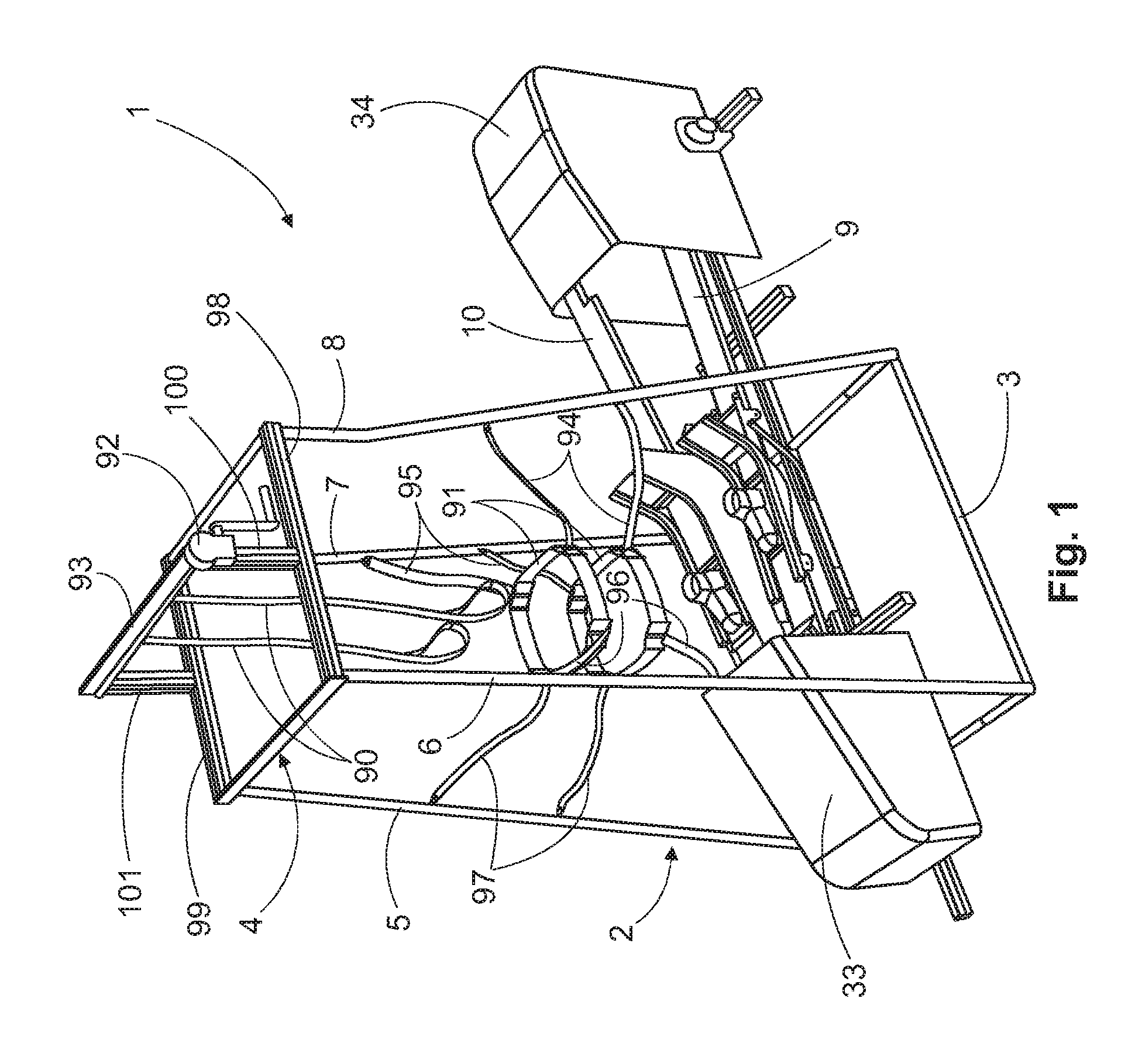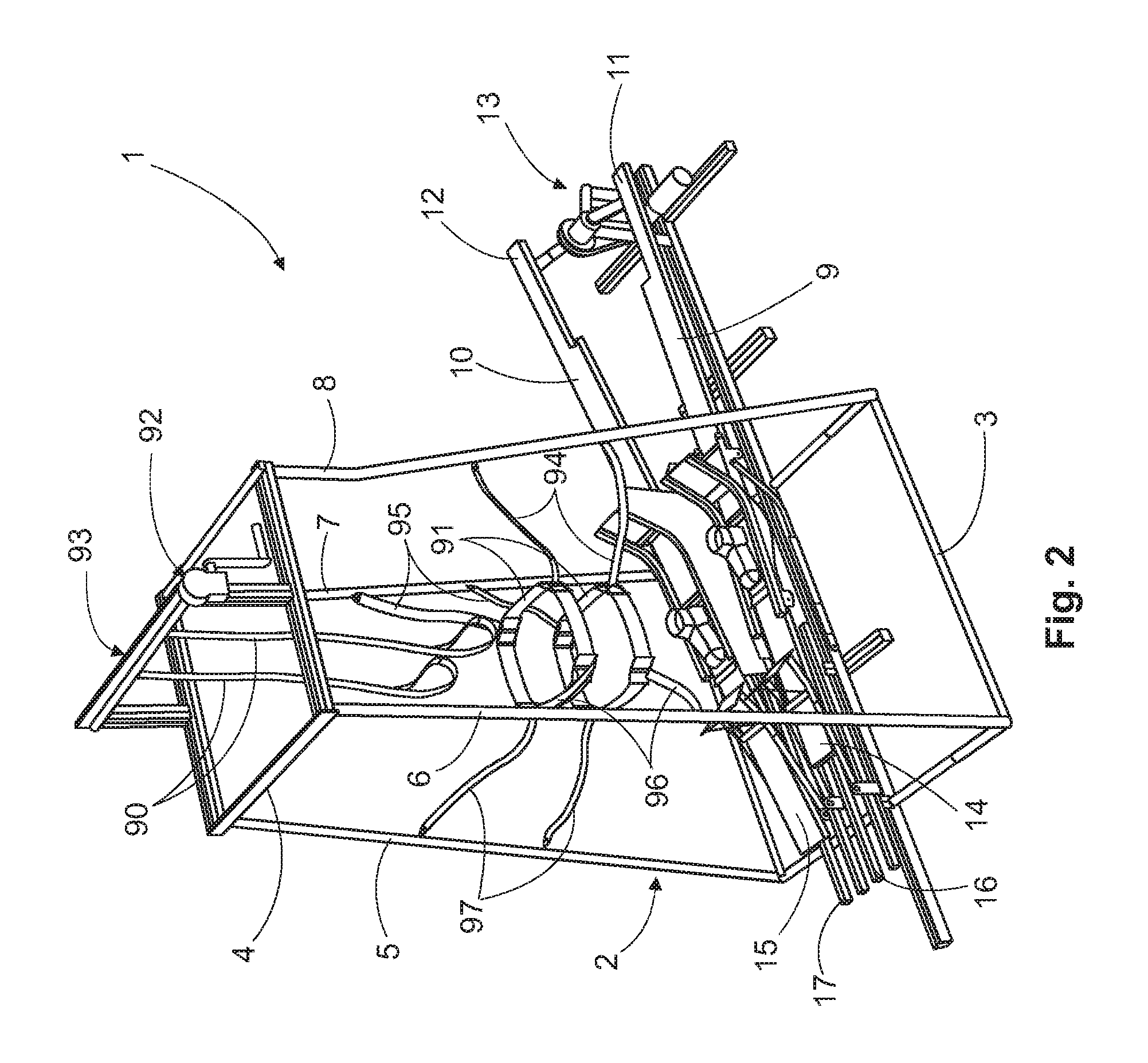Apparatus for Rehabilitation of Patients Suffering Motor Dysfunction
a technology for patients and wheelchairs, applied in the field of wheelchairs for patients suffering motor dysfunction, can solve the problems of not being able to efficiently achieve the right motor coordination, and not being able to provide any type of step regulation or limb movement sequence for patients with strong neurological disorders. , to achieve the effect of improving muscle tone, improving muscular activity, and developing balan
- Summary
- Abstract
- Description
- Claims
- Application Information
AI Technical Summary
Benefits of technology
Problems solved by technology
Method used
Image
Examples
Embodiment Construction
[0045]Now referring in detail to the invention, the same refers to an apparatus for use preferably in medical areas to rehabilitate patients with motor disorders, particularly patients suffering motor dysfunction in the lower limbs. However, while more specific reference will be made to rehabilitation of the lower limbs, the present apparatus has shown to be effective in a re-educating and rehabilitating a handicapped person integrally, such as correcting postural disorders, neuronal disorders, standing disorders and other physical dysfunctions. The apparatus, generally indicated by reference number 1 in FIGS. 1 and 2, comprises a support structure such as a chassis 2 of a light and resistant construction and material, of aluminium or steel for example, having a base 3, a top or upper portion 4 and a plurality of columns 5, 6, 7, 8. The chassis is resistant and capable of supporting at least the weight of a patient and the components.
[0046]Mounted at a bottom part of the chassis, a ...
PUM
 Login to View More
Login to View More Abstract
Description
Claims
Application Information
 Login to View More
Login to View More - R&D
- Intellectual Property
- Life Sciences
- Materials
- Tech Scout
- Unparalleled Data Quality
- Higher Quality Content
- 60% Fewer Hallucinations
Browse by: Latest US Patents, China's latest patents, Technical Efficacy Thesaurus, Application Domain, Technology Topic, Popular Technical Reports.
© 2025 PatSnap. All rights reserved.Legal|Privacy policy|Modern Slavery Act Transparency Statement|Sitemap|About US| Contact US: help@patsnap.com



